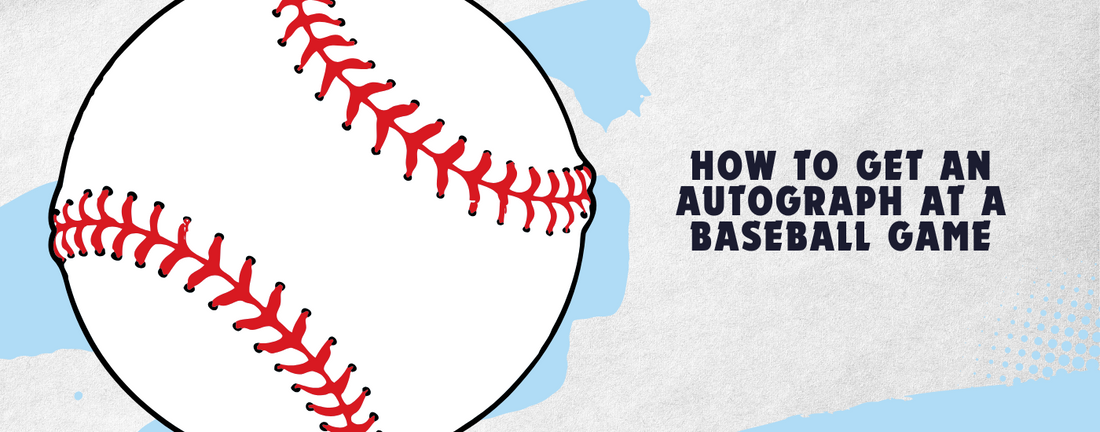
How to Get an Autograph at a Baseball Game
Baseball games offer more than just the thrill of home runs and strikeouts; they’re also an incredible opportunity to meet your favorite players and snag an autograph—a keepsake that holds sentimental value for years to come. But getting one isn’t always as simple as walking up to a player with a pen in hand. It requires careful planning, good timing, and a polite approach. Whether you’re a lifelong fan or attending your first game, this guide will walk you through the essential steps to improve your chances of success while creating memorable experiences along the way.
1. Arrive Early
- Why it matters: Players often take time to sign autographs before the game, during warmups, or during batting practice. By arriving early, you increase your chances of catching players when they’re most relaxed and willing to engage with fans.
- What to do: Check the game’s schedule and aim to arrive at least 90 minutes before the first pitch. This gives you ample time to scout the best locations, get close to the field, and be ready when players emerge.
- Pro tip: Some teams allow fans to watch batting practice, which can be an ideal time to interact with players. Players warming up near the field often stop to sign for fans who are patient and polite.
- Additional benefits: Arriving early doesn’t just improve your chances of an autograph—it also allows you to soak in the pre-game atmosphere, watch players practice, and even capture memorable photos. Plus, you’ll avoid the stress of fighting through large crowds that typically form closer to game time.
2. Know Where to Stand
- Why it matters: Positioning yourself in the right area is crucial because players are more likely to interact with fans in certain locations.
- Best locations: The spots near the dugout, bullpen, and along the foul lines are prime real estate for autograph seekers.
-
Tips for positioning:
- If you want signatures from home team players, stand near their dugout where they enter and exit.
- For visiting players, the area near the visitor’s dugout or bullpen is better.
- Ask stadium staff if there’s a designated autograph section or restricted areas to avoid.
- Pro tip: Players often take the time to interact with fans who know where to stand and patiently wait for them.
3. Bring the Right Gear
- Why it matters: Having the right items ensures players can easily sign and that your keepsake will last.
-
Items players prefer to sign:
- Baseballs (official MLB balls work best and are highly valued)
- Hats, jerseys, and T-shirts with team logos
- Baseball cards or player-specific memorabilia
- Bring good pens: A blue or black Sharpie works well for most items because it dries quickly and doesn’t smudge. For baseballs, consider a ballpoint pen to maintain a neat signature.
- Don’t overpack: Carry only a few high-priority items to avoid overwhelming players or fumbling when the opportunity arises.
- Pro tip: Store your items in a small, easy-to-carry bag so you can quickly access them when needed.
4. Be Polite and Respectful
- Why it matters: Players are more likely to sign autographs when they feel respected and appreciated by fans.
-
Do’s:
- Greet players with a smile and a polite request: “Could you please sign this for me?”
- Always say “thank you” after receiving a signature.
- Respect their space and recognize when they’re unavailable or with family.
-
Don’ts:
- Don’t shout or be overly aggressive in your approach.
- Avoid interrupting players during warmups, team meetings, or when they appear focused.
- Don’t bring large stacks of items for them to sign—this can frustrate players and decrease your chances.
- Pro tip: Players appreciate genuine fans. Showing knowledge of their recent performances or team updates can create a positive interaction.
5. Know the Players
- Why it matters: Recognizing players increases your chances of success and prevents you from missing opportunities.
-
Preparation tips:
- Study the team’s roster, focusing on key players and those known for signing autographs.
- Bring a game program or use a mobile app to quickly identify players.
- Familiarize yourself with uniform numbers and faces, especially for newer players or prospects.
- Pro tip: Knowing lesser-known players can be advantageous, as they may be more willing to sign than superstars.
6. Look for Opportunities Post-Game
- Why it matters: Players may be more relaxed after a game, and many take time to sign as they exit the stadium.
-
Best places to wait:
- Near the team bus or parking lot where players leave the stadium
- Designated areas for post-game fan interactions
- Pro tip: Stadium security or staff members can often direct you to the best post-game autograph locations.
- Patience pays off: Waiting after the game can sometimes yield better results than before the game, especially if the team has won or a player had a good performance.
7. Engage in Fan Events and Promotions
- Why this helps: Organized events offer a more structured and often guaranteed chance to meet players.
-
Examples of events:
- Fan appreciation days
- Player meet-and-greets
- Charity events involving players
-
How to find them:
- Check the team’s official website or social media pages for announcements.
- Join fan clubs or email newsletters to receive notifications.
- Pro tip: Some events may require tickets or reservations, so plan accordingly and secure your spot early.
8. Respect Autograph Policies
- Why it matters: Knowing and following the rules ensures you don’t miss opportunities due to preventable mistakes.
-
Common policies:
- Players may limit how many items they sign per fan.
- Certain areas of the stadium may be restricted to pass holders or VIP members.
- Some players have designated signing times and may not sign at other times.
-
What to do:
- Familiarize yourself with stadium rules before attending.
- Be aware of player preferences and respect their boundaries.
- Pro tip: If you’re unsure, ask stadium staff or ushers about any specific autograph rules.
9. Be Patient
- Why patience is key: Not every attempt will result in an autograph, and persistence often pays off in the long run.
- Stay positive: Enjoy the game-day experience even if you don’t get a signature right away.
-
Persistence tips:
- Don’t give up after one unsuccessful attempt—try again at future games.
- Rotate your approach by targeting different players or changing locations.
- Pro tip: Players notice polite and persistent fans. If they see you consistently showing up and being respectful, they’re more likely to reward your efforts.
10. Make It Memorable
- Why it matters: An autograph is more special when it’s connected to a meaningful experience.
- Consider personalization: Ask players to sign items with your name or a short message. Personalized autographs are unique and less likely to be sold, making players more willing to sign them.
- Show enthusiasm: Wearing team gear, holding signs, or showing genuine excitement can make you stand out.
- Capture the moment: Take photos (if allowed) to preserve the memory of meeting your favorite player.
- Pro tip: Share your experience on social media and tag the team or player. Some players may even respond or like your post.
Scoring an autograph at a baseball game is about more than just adding to your collection—it’s about the thrill of the chase, the memories you create, and the stories you take home. Whether you walk away with a signed ball or simply cherish the interaction you had with your favorite player, the experience will be unforgettable. By following these tips, you’re not only increasing your chances of success but also embracing the spirit of the game. So next time you head to the stadium, bring your gear, your patience, and your enthusiasm—and who knows, you might just come back with a piece of baseball history. Play ball!

